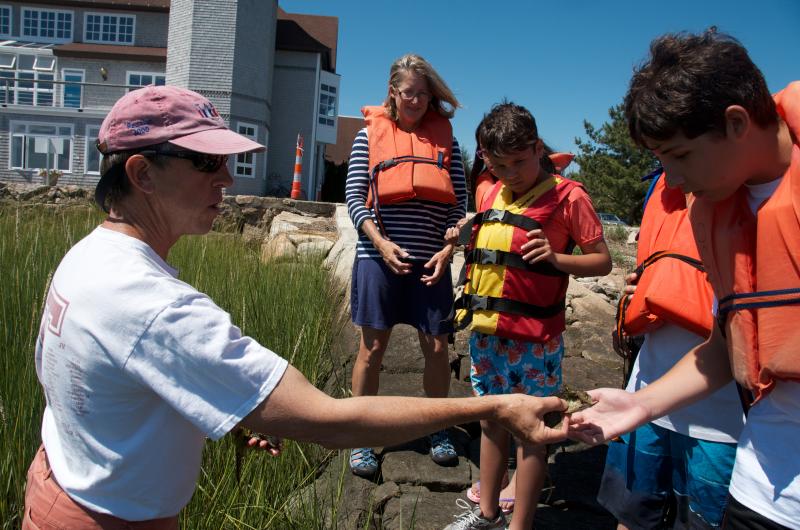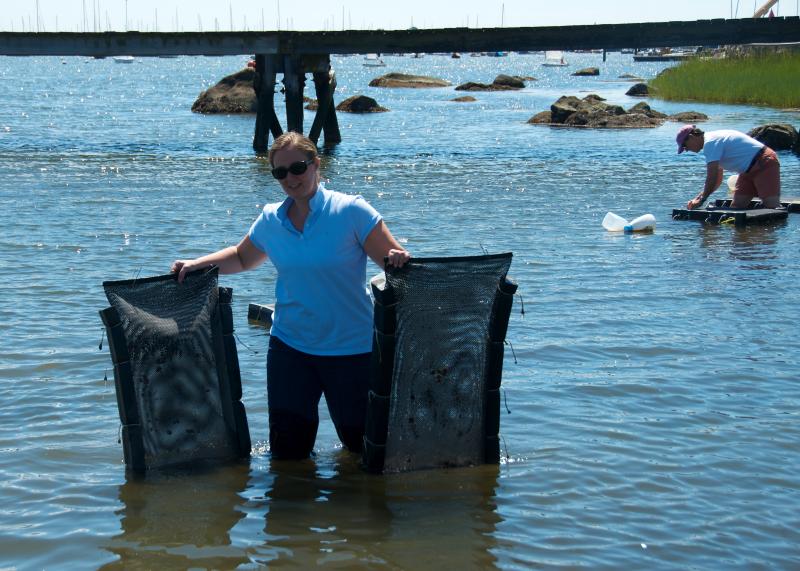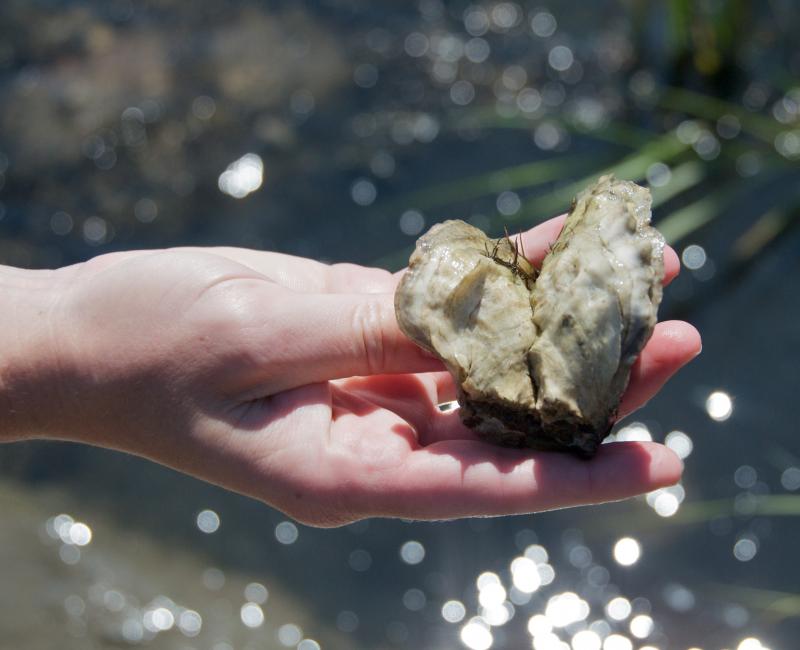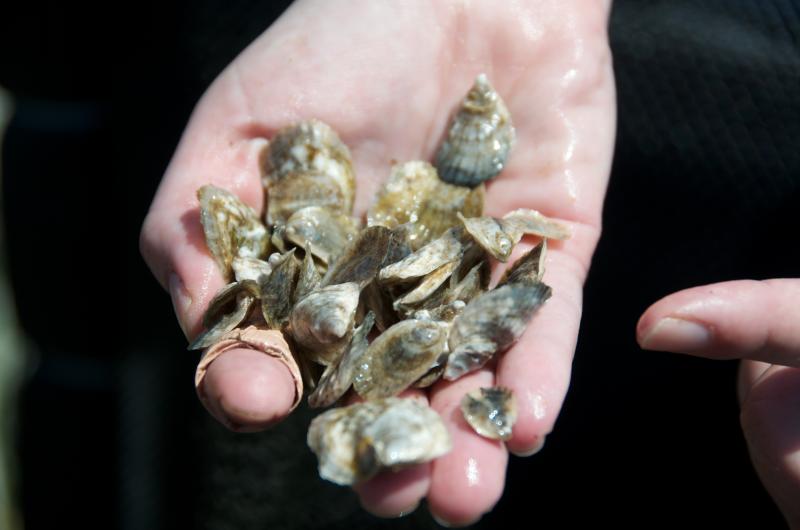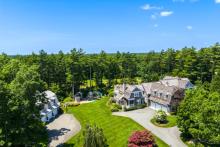Town helps Tabor float oyster farm project
Some schools grow vegetables with their students, but at Tabor Academy, they’re farming a crop that’s a little more fitting for the “school by the sea.”
In mid-July, faculty from the school set up their first aquaculture farm, located a stone’s throw from the marine science labs.
“We wanted to create an additional marine science experience for students,” said David Bill, chair of the Nautical Science Department.
By working under the town of Marion’s aquaculture permits, Tabor was able to set up its small farm without much rigmarole. They also received approximately 1,000 seed oysters from the town’s own efforts to build up the population.
Those tiny seed have already grown from one-eighth of an inch to an inch in about a month’s time, feeding off the algae in the harbor. Tabor purchased an additional 1,000 seeds from Taylor Cultured Seafood in Fairhaven that went into the sea last week.
Summer students are helping out by monitoring the oysters and flipping the cages periodically, but come September, the farm will be incorporated into the school’s marine science classes and eventually the life sciences.
To prepare for the farm, marine science teacher Elizabeth Leary took a class on shellfish farming at Roger Williams University.
But much of their information has come from Marion Shellfish Officer Isaac Perry and members of the Harbormaster Department who have worked with Tabor to get the project afloat. Teacher Jennifer Albright said their tips have helped lessen the learning curve.
“It’s a few fewer things we have to figure out on our own,” said Albright.
Sippican Harbor is a good place to grow oysters, said Perry. While nearby towns have had problems with their shellfish population, oysters are thriving in Marion waters.
“We’ve been fortunate. We’ve got a lot of brackish water, which the oysters seem to like. They’re sheltered too so the winters don’t take its toll like they can in open areas,” he explained.
The town’s own aquaculture program started in the 1990s. In addition to quahogs, soft shell crabs, and scallops, the town grows an average of 150,000 oysters yearly.
Three oyster farms also cultivate half-acre grants in the harbor.
Giving students both a hands on experience and introducing them to aquaculture is something Bill, Albright, and Leary are excited to do.
“It’s a huge growing industry, so it’s an opportunity for them to know there’s more than a laboratory approach to science.” said Albright. “We’re looking at sustainable harvesting of shellfish, looking at growth rates, looking at the influence of temperature, and all of that stuff.”
The teachers said the farm has the opportunity to spark a variety of learning opportunities beyond Marion, especially as commercial fishing suffers.
“With the collapse of the New England fisheries, aquaculture is getting a huge following. It’s a way for fishermen to continue a traditional livelihood. Aquaculture is a new possibility,” he said.
“Why not educate our students about it? No only from a science point of view, but maybe they’ll want to be commercial growers one day. Who knows what this might lead to.”
Cooperating with the town is also important.
“It’s a great opportunity for the town and for Tabor,” said Perry.
He added that the town has had partnerships with Old Rochester Regional High School, the Marion Natural History Museum, and Roger Williams University.
“The idea of our project is not only to create an educational foundation in our science classes in addition to what we already do, but also to support the town’s venture – supporting local shellfisheries,” said Bill. “I don’t want it to be seen as an exclusive tabor only thing.”
Bill stressed that the project is educational in nature not commercial. But if all goes well, the students might be eating a few oysters on the half shell by the fall of 2014.



